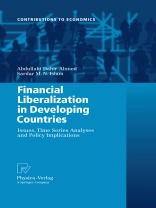The recent global ?nancial crisis has made ?nancial liberalization a topic of great academic and practical interest. This book makes new contributions to the topic by combining fact-?nding, empirical analysis, and theory to examine the relationship between ?nancial liberalization and economic growth. Among its contributions, the book provides detailed country assessments on the effects of ?nancial liberalization, including its striking impact on the banking sector. Although an important goal of ?nancial deregulation has been to help ?nancial institutions better perform their role in intermediating resources, the book models how deregulation may fail to achieve that goal in countries with underdeveloped ?nancial markets and institutions. For that purpose, the book draws on actual experience in Kenya, Malawi, Botswana, and Thailand. This book should constitute important reading for students of ?nancial economics, researchers and general academics, ?nancial practitioners, policymakers, and teachers of economics. North Carolina, USA Steven L. Schwarcz December 2008 Stanley A. Star Professor of Law & Business, Duke University Founding Director, Duke Global Capital Markets Center Durham vii Abstract and Preface The latest global ?nancial and economic crisis of 2008 shows the need to – examine the desirability of ?nancial liberalization and the basis for the view that ?nancial deregulation by itself cannot be considered as a substitute for better economic management. The literature on ?nancial liberalization has identi?ed various mechanisms through which removing controls on interest rates may impact economic growth.
Spis treści
Background, Structure and Financial Reforms.- Literature Review.- The Theory of Financial Liberalization and its Economic Impact: An Assessment.- An Analysis of the Economic Outcome of Financial Liberalization.- Testing the Potential Impact of Economic Changes on Savings in African Countries.- Welfare Implications of Financial Liberalization in Thailand: A Cost-Benefit Analysis.- Summary, Findings and Conclusion.












